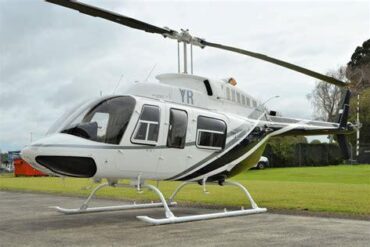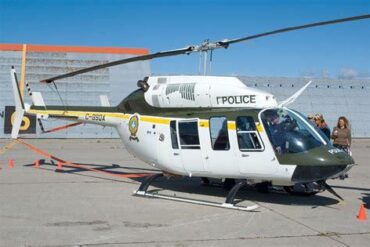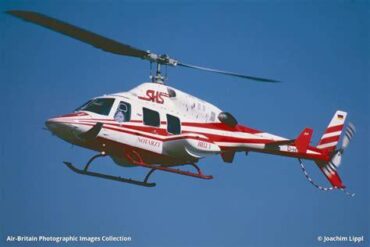The Bell 206L1 is a versatile and highly regarded helicopter, widely used for various applications ranging from law enforcement to air ambulance services and private transportation. Understanding the price of the Bell 206L1 and its operating costs is essential for potential buyers and operators. This article delves into the specifics of the Bell 206L1, providing insights into its acquisition costs, operating expenses, and factors that influence these figures.
Overview of the Bell 206L1
The Bell 206L1 is an enhanced version of the iconic Bell 206 series, featuring a more powerful engine and improved payload capacity. Known for its reliability and ease of maintenance, the Bell 206L1 has become a favorite in various sectors, particularly in corporate aviation, tourism, and medical evacuation. The helicopter is designed to seat up to six passengers comfortably, making it an ideal choice for medium-range transport.
Key Specifications
-
Engine: Rolls-Royce 250-C20B
-
Maximum Takeoff Weight (MTOW): 3,200 lbs (1,451 kg)
-
Cruise Speed: 130 knots (150 mph)
-
Range: Approximately 360 nautical miles (415 miles)
-
Height: 11.6 ft (3.54 m)
-
Length: 39.8 ft (12.14 m)
Acquisition Costs of the Bell 206L1
When considering the purchase of a Bell 206L1, buyers should factor in various elements that contribute to the overall acquisition cost. As of the current market conditions, the average price for a pre-owned Bell 206L1 ranges from $500,000 to $1 million. This price can fluctuate based on several factors, including the helicopter’s age, condition, equipment, and market demand.
Factors Influencing Purchase Price
-
Age and Condition: Older models with higher flight hours typically sell for less than newer ones with lower hours. A well-maintained helicopter can command a higher price.
-
Customization and Equipment: The presence of advanced avionics, upgraded interiors, or specialized equipment (like medical kits for air ambulances) can significantly increase the purchase price.
-
Market Demand: The demand for helicopters can vary seasonally and regionally. A surge in demand for air travel can elevate prices.
-
Location: Geographic location can impact the availability and price of the Bell 206L1. In regions with a high demand for helicopters, prices may be higher.
-
Inspection and Maintenance History: A comprehensive maintenance history and recent inspections can assure buyers of the helicopter’s reliability, often justifying a higher price.
Operating Costs of the Bell 206L1
Understanding the operating costs is crucial for any potential operator of the Bell 206L1. Operating costs can be categorized into several components, including fuel, maintenance, insurance, and crew expenses.
1. Fuel Costs
The Bell 206L1 has a fuel consumption rate of approximately 25 gallons per hour (GPH). Given the current average price of aviation fuel, which can range from $4 to $6 per gallon, the fuel cost per hour can range from $100 to $150. This can significantly affect the overall operating costs, especially for operators who fly frequently.
2. Maintenance Costs
Maintenance is another critical factor influencing operating costs. The Bell 206L1 is known for its reliability, but regular maintenance is essential to keep the helicopter in optimal condition. Estimated annual maintenance costs typically fall between $25,000 and $50,000. These costs can include:
-
Routine inspections
-
Engine overhauls
-
Parts replacement
-
Helicopter modifications
A proactive maintenance program can help prevent more extensive repairs and unexpected costs, ultimately saving money in the long run.
3. Insurance Costs
Insurance is an essential consideration for any helicopter operator. The cost of insurance for the Bell 206L1 varies based on factors such as the operator’s experience, usage, and coverage type. On average, insurance costs can range from $10,000 to $30,000 per year. Operators should consider liability insurance, hull insurance, and additional coverage for specialized operations (like air ambulance services).
4. Crew Costs
Hiring skilled pilots and crew members is necessary for the safe operation of the Bell 206L1. The average annual salary for a helicopter pilot can range from $60,000 to $120,000, depending on experience and the nature of the operation. If additional crew members are required for specific operations, such as medical personnel for air ambulances, this can add to the overall cost.
Total Estimated Operating Costs
Summing up the aforementioned costs, operators can expect to incur total operating costs in the range of $200,000 to $400,000 annually. Below is a detailed breakdown:
| Cost Category | Estimated Annual Cost |
|---|---|
| Fuel | $20,000 – $30,000 |
| Maintenance | $25,000 – $50,000 |
| Insurance | $10,000 – $30,000 |
| Crew Costs | $60,000 – $120,000 |
| Total Operating Costs | $125,000 – $230,000 |
Economic Considerations
When assessing the feasibility of operating a Bell 206L1, economic considerations play a crucial role. The demand for helicopter services can fluctuate, affecting the revenue generated from operations. Operators must also consider the potential for charter services, medical transportation, or aerial surveys as revenue streams.
Revenue Generation
For operators engaging in charter services, the potential income can vary significantly based on the market. Charter prices for a Bell 206L1 typically range from $1,200 to $1,800 per flight hour, depending on the region and service offered. By operating efficiently and maintaining a high standard of service, operators can optimize their revenue potential.
Break-Even Analysis
To assess the viability of operating a Bell 206L1, conducting a break-even analysis is beneficial. This involves calculating the number of flight hours required to cover the total operating costs. For instance, if total operating costs are estimated at $200,000, and the average revenue per flight hour is $1,500, operators would need to achieve approximately 133 flight hours per year to break even.
Conclusion
The Bell 206L1 remains a popular choice among operators seeking a reliable and efficient helicopter for various applications. Understanding the acquisition costs and operating expenses associated with the Bell 206L1 is crucial for making informed decisions. By carefully considering all factors, including fuel, maintenance, insurance, and crew costs, operators can effectively manage their budgets and maximize their investment. With its proven track record and versatility, the Bell 206L1 is well-positioned to meet the diverse needs of the aviation industry.


















